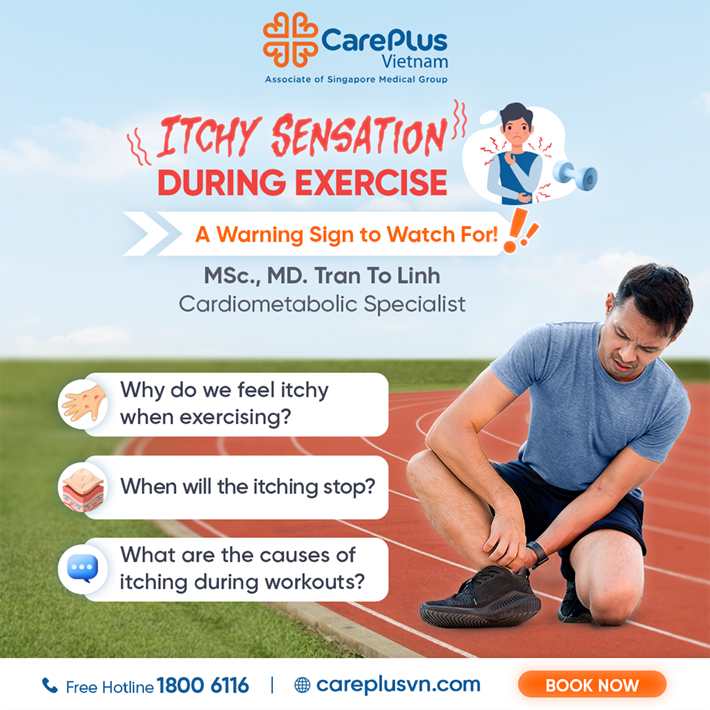ITCHING DURING EXERCISE – A WARNING SIGN TO PAY ATTENTION TO

6/6/2025 10:05:04 AM
Many people have experienced a tingling or itchy sensation in their calves or all over the body while doing sports, especially during running or cardio exercises. If this happens to you, don’t panic—it could simply be a normal physiological response to intense physical activity. However, in some cases, this itching may serve as a signal from the body, potentially related to cardiovascular conditions or indicating overexertion, especially in beginners or those returning to exercise after a long break.
👉 Let’s hear the insights from Dr. Tran To Linh, MSc – Cardiometabolic Specialist at CarePlus Clinic System, in the article below!
✅ Why Does Itching Occur During Exercise?
- When you start running or engaging in cardio activities, your body demands more oxygenated blood to supply the working muscles. To meet this need, small blood vessels known as capillaries dilate to increase blood flow. This dilation can stimulate nearby nerve endings, triggering a sensation of itching. This is a common and generally harmless phenomenon.
- In addition, the body may release histamine during exercise to help reduce fatigue. Histamine, typically associated with allergic responses, can also contribute to the itchy feeling, much like how it behaves during allergic reactions.
✅ When Does the Itching Go Away?
Usually, the itching sensation subsides once you stop exercising, as your heart rate slows and blood flow returns to normal. With regular training, your body gradually adapts to the increased blood circulation demands, and the itching may diminish over time.
✅ What If the Itching Persists?
If the itching does not improve, consider the following measures:
- Use oral antihistamines if needed.
- Apply anti-itch creams or lotions.
- Take a warm bath with Epsom salts to soothe the skin.
However, if the itch persists or is accompanied by other symptoms such as dizziness, shortness of breath, or unusual skin changes, you should consult a healthcare professional for proper diagnosis and management.
✅ Other Causes of Itching During Exercise
Besides blood circulation factors, itching can also result from:
- Allergic reactions to workout gear: Materials such as latex (yoga mats or sports bras) or spandex in activewear may trigger allergic responses in some individuals.
- Dehydration: Inadequate hydration during workouts can lead to dry skin, contributing to itchiness.
- Food allergies: Certain foods, when combined with environmental conditions during exercise, may provoke allergic responses in sensitive individuals.
👉 Exercise-induced itching is a relatively common occurrence and not always a cause for concern. Nevertheless, if the itch does not resolve or is associated with other warning signs, seeking medical advice is essential to rule out underlying health issues.
Remember to maintain a consistent exercise routine and take scientific care of your body to ensure long-term health and performance.
Source: Cleveland Clinic – Runner’s Itch